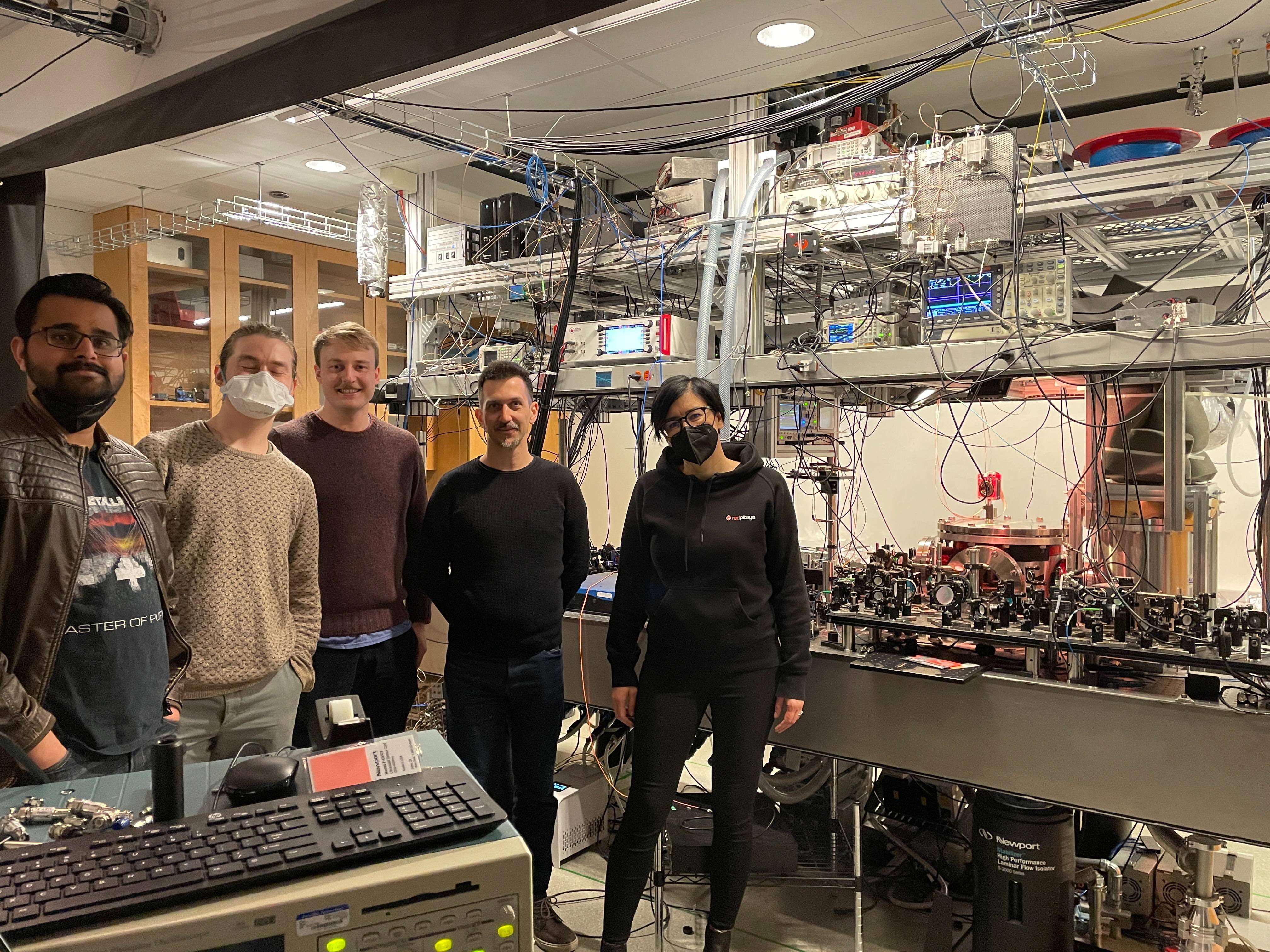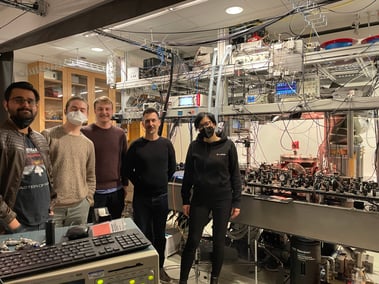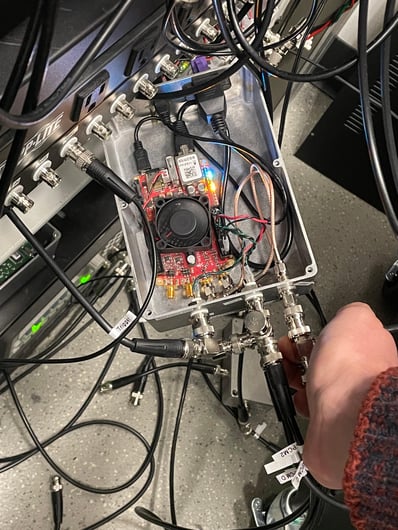Simon Lab and Red Pitaya, a quantum match
-
Posted by
 Red Pitaya Team
, May 12, 2022
Red Pitaya Team
, May 12, 2022

Our team recently visited the Simon Lab in Chicago where they use Red Pitaya for quantum experiments.

 The Simon Lab is a research group at the University of Chicago that explores the interface of condensed matter physics, quantum optics and quantum information. To complete its projects in such a vanguard field, the lab relies heavily on technological innovation, especially Hamiltonian engineering, control and electronics.
The Simon Lab is a research group at the University of Chicago that explores the interface of condensed matter physics, quantum optics and quantum information. To complete its projects in such a vanguard field, the lab relies heavily on technological innovation, especially Hamiltonian engineering, control and electronics.
Topics of investigation include, among others, laser-cooled atoms offering an isolated platform for research on quantum coherence, thanks to the fact they hardly move due to their low temperature, and can persist unperturbed because of the high-vacuum conditions. Micro-Kelvin temperatures can be reached, using a combination of near-resonant laser and magnetic files, as well as far-tuned high-power lasers for trapping and transport.
Another research example exists of cavity Rydberg polaritons for the exploration of photons in near-degenerate multimode cavities, where they act as massive, harmonically trapped particles. These charged photons are coupled to an ensemble of Rydberg-dressed cold atoms, interacting strongly due to their size. The Simon Lab is now working to use this platform to explore the fractional quantum Hall physics of photons in curved space, as well as a tool to make photonic quantum information processors.
These and other systems contain a wide range of resonators, cavities, and other high-frequency harmonic systems, which need to be driven, controlled, monitored, analyzed and filtered. In working on this project, the Simon Lab has come to understand the tremendous added value of FPGAs, not only because they represent high-bandwidth, low latency experimental control hardware, but also due to the fact that they are reconfigurable, meaning they offer endless flexibility for integration in almost any project.
This is, of course, where Red Pitaya comes into the picture, combining high-frequency signal generation and processing with flexible configuration. The Simon Lab has chosen STEMLab 125-14 units to be used as FPGAs in their projects, which is why they invited Red Pitaya´s CEO Mateja Lampe Rupnik and CTO Črt Valentinčič to visit their facilities last April, and see where these units are being implemented. Some examples of completed projects can be found below, with more details at http://simonlab.uchicago.edu/FPGA.html, where the related configuration files can also be downloaded.
- FIR (Finite Impulse Response) Filter with Built-in VNA (Vector Network Analyzer): this FPGA FIR filter is digitally capable of cancelling numerous high-Q mechanical/acoustical resonances and anti-resonances in the open-loop response. This allows arbitrary suppression of poles and zeros below 100 kHz through real-time convolution of the feedback error signal with an inverse filter.
- Multi-Chromatic Real-Time Scriptable DDS (Direct Digital Synthesis): this system uses a single 125 MSps DAC channel of the STEMLab to simultaneously output up to 10 programmable, real-time sweepable frequencies with programmable amplitudes, ideal for interfacing with an AOD (Acousto-Optic Deflector) for optical-tweezer experiments.
- Two-Channel, Real-Time Scriptable DDS: here, the two-channel DAC in the Red Pitaya unit is used to create a frequency synthesizer with output frequencies with programmable sweeping. The maximum output frequency for each channel is half the maximum sampling frequency, or 62.5 MHz.

Both the Simon Lab and Red Pitaya can clearly be considered champions of innovation and scientific/technological creativity, even if in different fields. As such, it´s quite easy to understand why they make such a great quantum match.
About the Red Pitaya Team
The Red Pitaya editorial team consists of engineers, researchers, and product experts who develop and test cutting-edge open-source test & measurement solutions.
Our mission is to make advanced instrumentation accessible to everyone — from students and educators to leading research labs worldwide.



